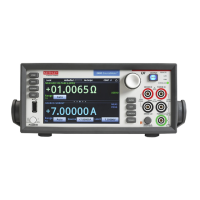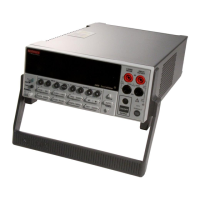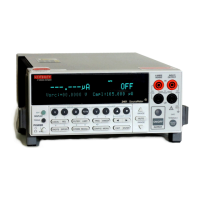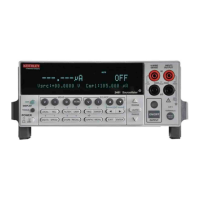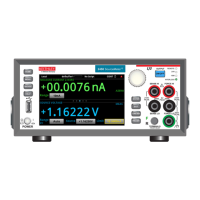Interactive SourceMeter® Instrument Reference Manual Section 7:
Introduction to TSP operation
2461-901-01 A/November 2015 7-29
Suggestions for increasing the available memory
If the amount of memory used is over 95 percent, or if you receive out-of-memory event messages,
you should reduce the amount of memory that is used.
Some suggestions for increasing the available memory:
• Turn the instrument off and on. This deletes scripts that have not been saved and reloads only
scripts that have been stored in nonvolatile memory.
• Consider removing unused reading buffers.
• Consider resizing reading buffers to a smaller size.
• Reduce the number of TSP-Link
®
nodes.
• Delete unneeded global variables from the run-time environment by setting them to nil.
• Adjust the collectgarbage() settings in Lua. See Lua memory management (on page 7-26)
for more information.
• Review scripts to improve their memory usage. In particular, you can see memory gains by
changing string concatenation lines into a Lua table of string entries. You can then use the
table.concat() function to create the final string concatenation.
Test Script Builder (TSB)
Keithley Instruments Test Script Builder (TSB) is a software tool available from the Keithley
Instruments website. You can install and use TSB to develop scripts for TSP-enabled instruments.
You must use the TSP command set to use Test Script Builder. Refer to Determining the command
set you will use (on page 2-80) for information about the command sets and changing them.
Installing the TSB software
The installation files for the Test Script Builder software are available for download on
http://www.keithley.com (http://www.keithley.com).
To install the Test Script Builder (TSB) software:
1. Close all programs.
2. Download the installer to your computer and double-click the .exe file to start the installation.
3. Follow the on-screen instructions.

